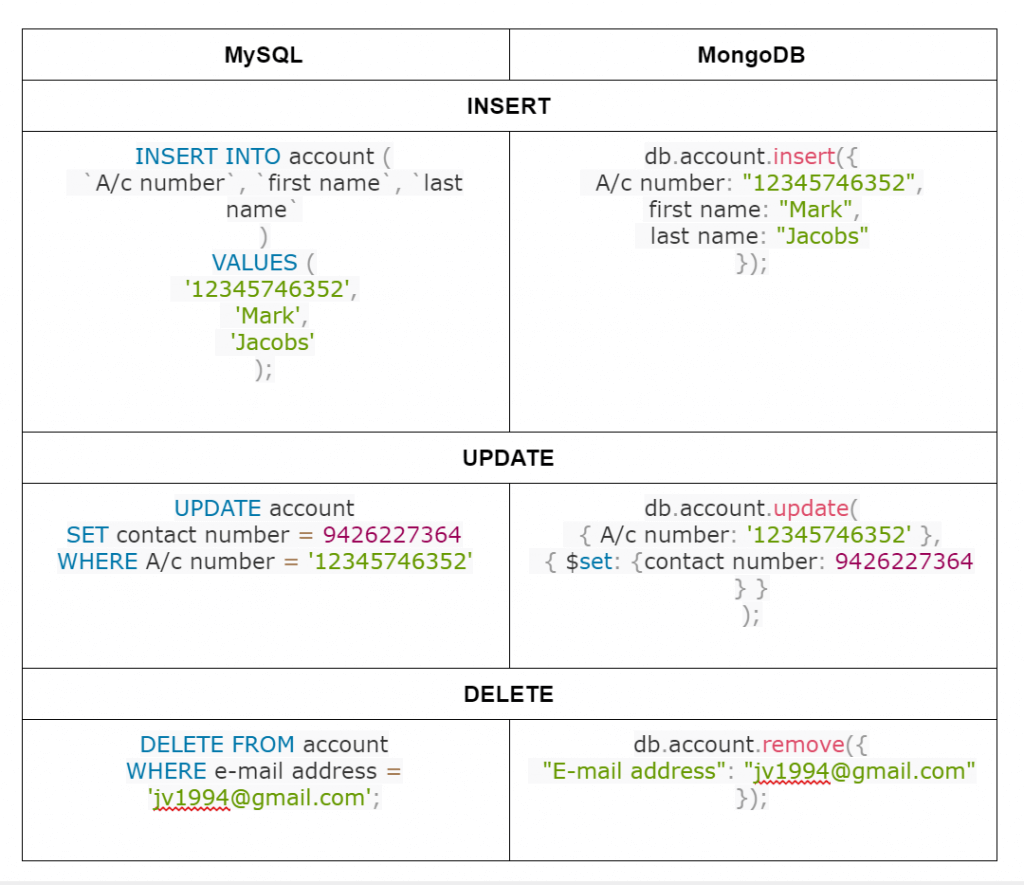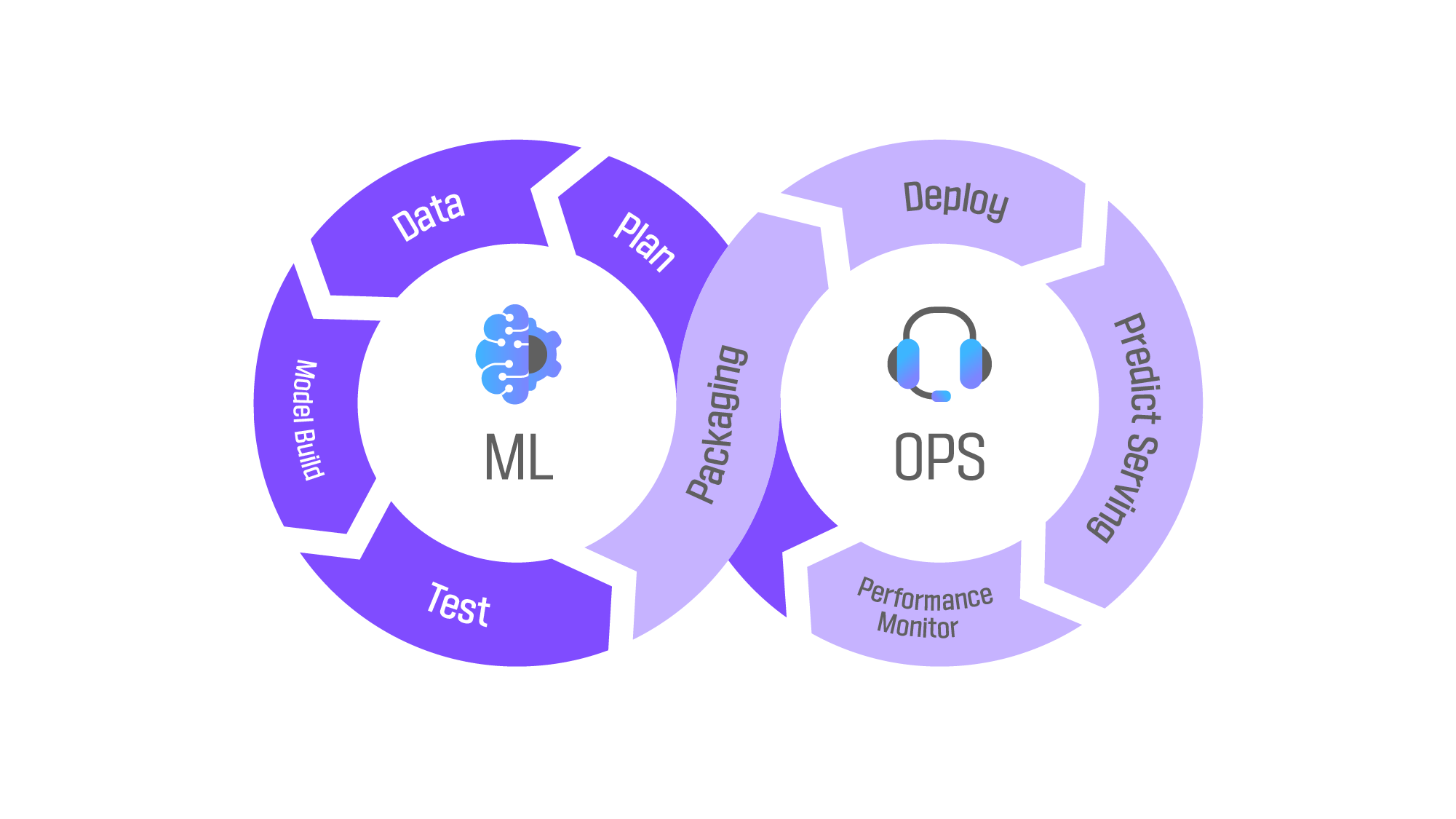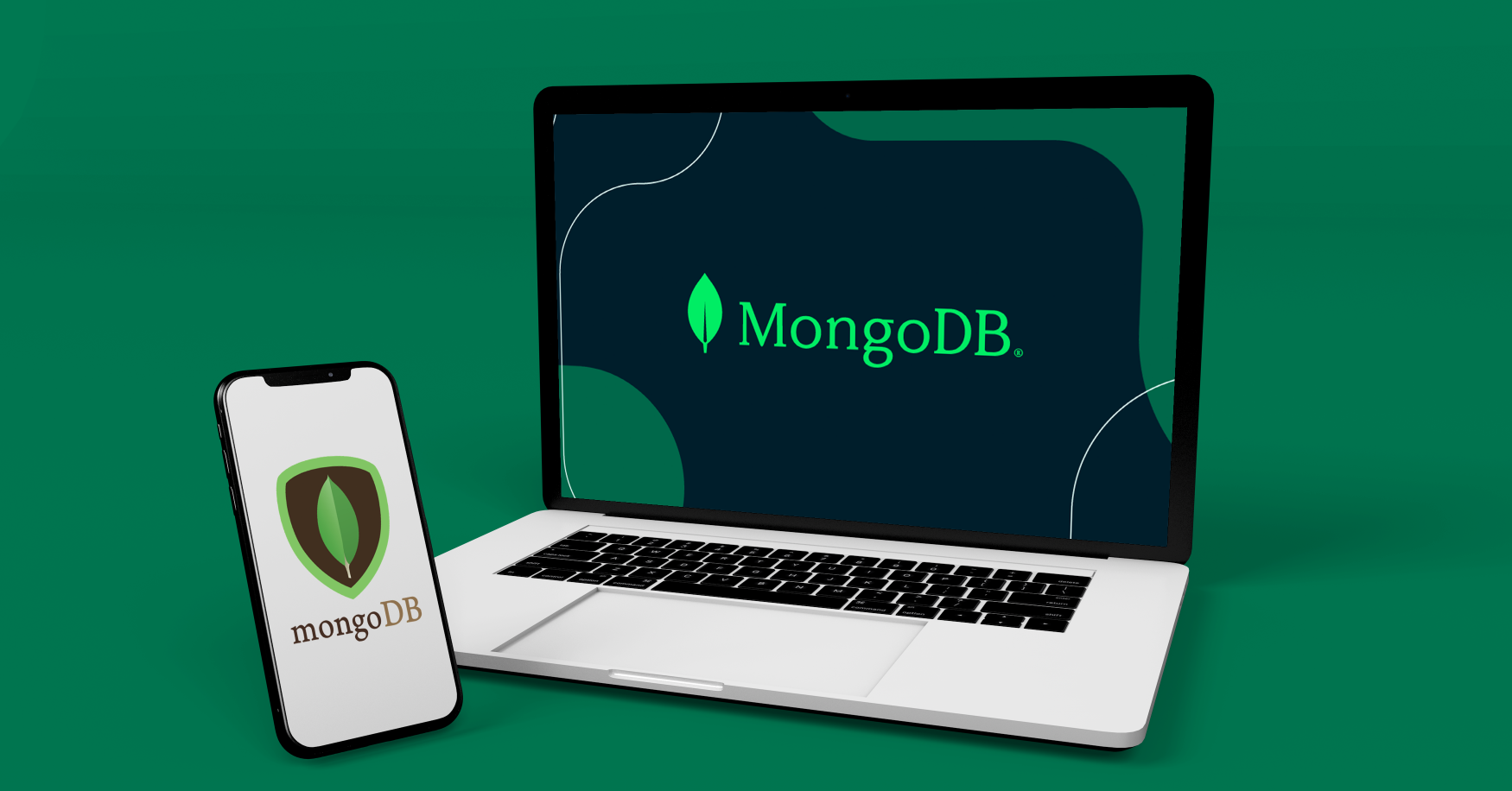What is MongoDB?

MongoDB is an open source NoSQL database management program. NoSQL is used as an alternative to traditional relational databases. NoSQL databases are quite useful for working with large sets of distributed data. MongoDB is a tool that can manage document-oriented information, store or retrieve information.
MongoDB supports various forms of data. It is one of the many nonrelational database technologies that arose in the mid-2000s under the NoSQL banner — normally, for use in big data applications and other processing jobs involving data that doesn’t fit well in a rigid relational model. Instead of using tables and rows as in relational databases, the MongoDB architecture is made up of collections and documents.
Organizations can use Mongo DB for its ad-hoc queries, indexing, load balancing, aggregation, server-side JavaScript execution and other features.
How it works?
MongoDB makes use of records which are made up of documents that contain a data structure composed of field and value pairs. Documents are the basic unit of data in MongoDB. The documents are similar to JavaScript Object Notation, but use a variant called Binary JSON (BSON). The benefit of using BSON is that it accommodates more data types. The fields in these documents are similar to the columns in a relational database. Values contained can be a variety of data types, including other documents, arrays and arrays of documents, according to the MongoDB user manual. Documents will also incorporate a primary key as a unique identifier.
Sets of documents are called collections, which function as the equivalent of relational database tables. Collections can contain any type of data, but the restriction is the data in a collection cannot be spread across different databases.
The mongo shell is a standard component of the open source distributions of MongoDB. Once MongoDB is installed, users connect the mongo shell to their running MongoDB instances. The mongo shell acts as an interactive JavaScript interface to MongoDB, which allows users to query and update data, and conduct administrative operations.
A binary representation of JSON-like documents is provided by the BSON document storage and data interchange format. Automatic sharding is another key feature that enables data in a MongoDB collection to be distributed across multiple systems for horizontal scalability, as data volumes and throughput requirements increase.
The NoSQL DBMS uses a single master architecture for data consistency, with secondary databases that maintain copies of the primary database. Operations are automatically replicated to those secondary databases for automatic failover.
MongoDB pros and cons

Advantages of MongoDB
Performance Levels
MongoDB stores most of the data in the RAM. It allows a quicker performance while executing queries.
It collects the data directly from the RAM than the hard disk and the returns come back faster. It is important to have a system with RAM and accurate indexes for enhanced performance levels.
High Speed and Higher Availability
MongoDB is a document-based database solution. It has attributes like replication and gridFS.
Its attributes allow an increase in data availability. It is also easy to access documents using indexing.
MongoDB performs 100 times faster than other relational databases and provides high performance.
Simplicity
MongoDB offers a simple query syntax that is much easier to grasp than SQL. It provides an expressive query language that users find helpful during development.
Easy Environment and a Quick Set-up
The installation, setup, and execution for MongoDB are quick and simple. It is faster and easier to set up than RDBMS and offers modern JavaScript frameworks.
This feature has allowed users to confidently select NoSQL structures. It also provides quicker learning and training opportunities than SQL databases.
Flexibility
MongoDB’s schema is not predefined. It means that it has a dynamic schematic architecture that works with non-structured data and storage.
Businesses keep evolving and so do the data they maintain. It is important to have a flexible database model that could adapt to these changes.
Sharding
MongoDB uses sharding while handling large datasets. Sharding is the process of dividing data from a large set and distributing it to multiple servers.
In case, there is an issue where the server cannot handle the data due to its size, it automatically divides it further without pausing the activity.
Scalability
Scalability is one of the most important advantages of MongoDB. As seen, MongoDB uses “sharding”, which expands the storage capacity.
Unlike SQL databases that use vertical scalability, sharding allows MongoDB to use horizontal scalability.
Ad-hoc Query Support
An ad-hoc query is a non-standard inquiry. It is generated to gain information if and when required.
MongoDB offers an enhanced ad-hoc queries feature. This allows an application to prepare for fore coming queries that may occur in the future.
Documentation
MongoDB is in the class of “Document Stores”, here the term document refers to data collection.
MongoDB offers accurate documentation which means it does not tether with the data while processing it for storage. It serves the data for each version, edition, or requirement to assist users with an excellent documentation process.
Technical Support
MongoDB offers technical support for the various services that it provides. There is technical support for the community forums, Atlas or Cloud Manager as well as Enterprise or Ops Manager.
In case of any issues, the professional customer support team is ready to assist clients.
Transactions
Transactions refer to the process of reviewing and eliminating unwanted data. MongoDB uses multi-document ACID (Atomicity, Consistency, Isolation, and Durability) transactions.
The majority of the application does not require transactions, although there are a few that may need it to update multiple documents and collections. This is one of the major limitations with MongoDB as it may lead to corruption of data.
Joins
Joining documents in MongoDB can be a very tedious task. It fails to support joins as a relational database.
Although there are teams deployed to fix this disadvantage, it is still in the initial stages and would take time to mature.
Users can utilize joins functionality by manually adding the code. But acquiring data from multiple collections requires multiple queries and this may lead to scattered codes and consume time.
Indexing
MongoDB offers high-speed performance with the right indexes. In case if the indexing is implemented incorrectly or has any discrepancies, MongoDB will perform at a very low speed.
Fixing the errors in the indexes would also consume time. This is another one of the major limitations of MongoDB.
Limited Data Size and Nesting
MongoDB allows a limited size of only 16 MB for a document. Performance nesting for documents is also limited to only 100 levels.

We are delighted to announce that Slitigenz has been recognized as the top IT outsourcing firm by the esteemed SoftwareOutsourcing…

2022 sparked the AI revolution, 2023 saw it infiltrate the business world, and now, in 2024, we’re at the brink…

Hey there! Ever wondered what the buzz around MLOps is all about? Let’s break it down! MLOps, short for Machine…

Whisper represents a cutting-edge neural network model meticulously crafted by OpenAI, designed to adeptly tackle the complexities of speech-to-text conversions.…


22 Comments
Your comment is awaiting moderation.
doxycycline 40mg capsules: generic doxycycline 200 mg – doxycycline 500mg price
Your comment is awaiting moderation.
generic clomid online: where to get clomid pills – buy cheap clomid price
Your comment is awaiting moderation.
http://ciprodelivery.pro/# buy ciprofloxacin
Your comment is awaiting moderation.
http://amoxildelivery.pro/# amoxicillin 500mg prescription
paxlovid covid paxlovid pharmacy Paxlovid over the counter
Your comment is awaiting moderation.
amoxicillin cephalexin: can we buy amoxcillin 500mg on ebay without prescription – cost of amoxicillin prescription
http://ciprodelivery.pro/# ciprofloxacin generic price
Your comment is awaiting moderation.
Hi, I do believe this is a great web site. I stumbledupon it 😉 I am going to revisit once again since I book-marked it. Money and freedom is the best way to change, may you be rich and continue to help others.
Your comment is awaiting moderation.
https://doxycyclinedelivery.pro/# doxycycline 100mg over the counter
Your comment is awaiting moderation.
buy clomid tablets: cheap clomid without dr prescription – can i get clomid without prescription
Your comment is awaiting moderation.
https://clomiddelivery.pro/# where to buy clomid online
amoxicillin 250 mg amoxicillin order online amoxicillin 500 capsule
Your comment is awaiting moderation.
where can i get clomid now: can i get clomid without dr prescription – where can i get generic clomid without a prescription
http://paxloviddelivery.pro/# paxlovid india
Your comment is awaiting moderation.
You’ve made some really good points there. I checked on the internet for more info about the issue and found most individuals will go along with your views on this website.
Your comment is awaiting moderation.
cipro online no prescription in the usa: buy cipro online without prescription – buy cipro
http://clomiddelivery.pro/# get generic clomid no prescription
order cheap clomid no prescription can i buy clomid for sale clomid price
Your comment is awaiting moderation.
http://doxycyclinedelivery.pro/# doxycycline pharmacy
Your comment is awaiting moderation.
Thanks for sharing. I read many of your blog posts, cool, your blog is very good.
Your comment is awaiting moderation.
https://doxycyclinedelivery.pro/# doxycycline 200mg price in india
can you get clomid now clomid pills cheap clomid price
Your comment is awaiting moderation.
paxlovid buy: п»їpaxlovid – paxlovid buy
Your comment is awaiting moderation.
paxlovid pill: Paxlovid buy online – Paxlovid over the counter
http://doxycyclinedelivery.pro/# doxycycline for sale uk
Your comment is awaiting moderation.
https://doxycyclinedelivery.pro/# doxycycline cream
Your comment is awaiting moderation.
canadian pharmacy amoxicillin: where can i buy amoxicillin over the counter uk – amoxicillin for sale
https://clomiddelivery.pro/# how to get cheap clomid pills
paxlovid pharmacy buy paxlovid online paxlovid generic
Your comment is awaiting moderation.
https://paxloviddelivery.pro/# п»їpaxlovid
buy cipro cheap cipro for sale cipro ciprofloxacin
Your comment is awaiting moderation.
medicine amoxicillin 500: buy amoxicillin – how to get amoxicillin over the counter
https://doxycyclinedelivery.pro/# doxycycline 500mg tablets
Your comment is awaiting moderation.
https://clomiddelivery.pro/# buying clomid tablets
Your comment is awaiting moderation.
how to get amoxicillin over the counter: canadian pharmacy amoxicillin – buy amoxicillin online cheap
Your comment is awaiting moderation.
ciprofloxacin 500mg buy online: cipro for sale – cipro online no prescription in the usa
https://doxycyclinedelivery.pro/# doxycycline 2984
buy cheap amoxicillin online buy amoxicillin 500mg online amoxil generic
Your comment is awaiting moderation.
http://paxloviddelivery.pro/# paxlovid india
paxlovid covid paxlovid india paxlovid generic
Your comment is awaiting moderation.
https://doxycyclinedelivery.pro/# doxycycline 40 mg cost
Your comment is awaiting moderation.
where buy clomid without insurance: where buy generic clomid tablets – where to buy cheap clomid without prescription
http://paxloviddelivery.pro/# Paxlovid buy online
Your comment is awaiting moderation.
An outstanding share! I have just forwarded this onto a colleague who has been conducting a little research on this. And he actually bought me dinner because I stumbled upon it for him… lol. So let me reword this…. Thank YOU for the meal!! But yeah, thanks for spending the time to discuss this subject here on your website.
Your comment is awaiting moderation.
Hi, I do think this is a great site. I stumbledupon it 😉 I am going to revisit once again since I book-marked it. Money and freedom is the greatest way to change, may you be rich and continue to help other people.
Your comment is awaiting moderation.
amoxicillin 500mg over the counter: amoxicillin tablets in india – price of amoxicillin without insurance
https://paxloviddelivery.pro/# paxlovid for sale
cipro online no prescription in the usa cipro for sale ciprofloxacin
Your comment is awaiting moderation.
where to buy generic clomid without dr prescription: clomid pills – can i buy generic clomid online
Your comment is awaiting moderation.
http://clomiddelivery.pro/# how to buy generic clomid online
Your comment is awaiting moderation.
I need to to thank you for this excellent read!! I absolutely loved every little bit of it. I’ve got you bookmarked to look at new stuff you post…
Your comment is awaiting moderation.
https://clomiddelivery.pro/# cost cheap clomid no prescription
azithromycin doxycycline doxycycline generic cost generic doxycycline 3626
Your comment is awaiting moderation.
cipro online no prescription in the usa: п»їcipro generic – cipro for sale
https://amoxildelivery.pro/# amoxicillin 500 mg
Your comment is awaiting moderation.
This blog was… how do you say it? Relevant!! Finally I’ve found something that helped me. Thank you.
Your comment is awaiting moderation.
how can i get cheap clomid online: where to buy generic clomid pill – how can i get generic clomid without dr prescription
https://ciprodelivery.pro/# buy cipro online canada
cipro pharmacy buy cipro online canada cipro pharmacy
Your comment is awaiting moderation.
https://paxloviddelivery.pro/# paxlovid buy
Your comment is awaiting moderation.
https://ciprodelivery.pro/# ciprofloxacin over the counter
amoxicillin buy canada amoxicillin 875 125 mg tab buy amoxicillin online mexico
Your comment is awaiting moderation.
cost of amoxicillin 875 mg: buying amoxicillin in mexico – purchase amoxicillin online
http://ciprodelivery.pro/# ciprofloxacin generic price
Your comment is awaiting moderation.
can i buy doxycycline over the counter in europe: where to get doxycycline in singapore – how can i get doxycycline over the counter
Your comment is awaiting moderation.
http://doxycyclinedelivery.pro/# 80 mg doxycycline
Your comment is awaiting moderation.
where can i buy cheap clomid online: cheap clomid without dr prescription – where buy clomid prices
http://ciprodelivery.pro/# cipro
buy cipro online canada ciprofloxacin 500mg buy online purchase cipro
Your comment is awaiting moderation.
mexican pharmaceuticals online: pharmacies in mexico that ship to usa – medication from mexico pharmacy
Your comment is awaiting moderation.
thecanadianpharmacy: best mail order pharmacy canada – online canadian pharmacy reviews
Your comment is awaiting moderation.
Pretty! This has been an incredibly wonderful post. Thank you for supplying these details.
Your comment is awaiting moderation.
india pharmacy: mail order pharmacy india – india online pharmacy
https://canadapharmast.online/# best canadian online pharmacy
mexican pharmaceuticals online mexican pharmaceuticals online purple pharmacy mexico price list
Your comment is awaiting moderation.
https://foruspharma.com/# mexico drug stores pharmacies
Your comment is awaiting moderation.
indian pharmacy paypal: indian pharmacy – online pharmacy india
Your comment is awaiting moderation.
buy medicines online in india best online pharmacy india п»їlegitimate online pharmacies india
Your comment is awaiting moderation.
canada pharmacy 24h: canada pharmacy world – canadian neighbor pharmacy
Your comment is awaiting moderation.
best online canadian pharmacy: reliable canadian online pharmacy – ordering drugs from canada
Your comment is awaiting moderation.
https://canadapharmast.online/# www canadianonlinepharmacy
Your comment is awaiting moderation.
canada pharmacy reviews: canadian discount pharmacy – best canadian pharmacy online
Your comment is awaiting moderation.
buy prescription drugs from india indian pharmacies safe top 10 pharmacies in india
Your comment is awaiting moderation.
buy prescription drugs from india: top 10 pharmacies in india – top 10 pharmacies in india
Your comment is awaiting moderation.
mexican pharmacy: buying from online mexican pharmacy – purple pharmacy mexico price list
Your comment is awaiting moderation.
online pharmacy india: indian pharmacy – buy medicines online in india
http://indiapharmast.com/# world pharmacy india
the canadian drugstore pharmacy in canada canadian pharmacy com
Your comment is awaiting moderation.
indian pharmacies safe top online pharmacy india indian pharmacies safe
Your comment is awaiting moderation.
mail order pharmacy india: india pharmacy – indian pharmacies safe
Your comment is awaiting moderation.
buying prescription drugs in mexico online: mexican pharmacy – п»їbest mexican online pharmacies
Your comment is awaiting moderation.
https://canadapharmast.com/# canadian pharmacy 1 internet online drugstore
Your comment is awaiting moderation.
indianpharmacy com: buy prescription drugs from india – india pharmacy mail order
Your comment is awaiting moderation.
best india pharmacy top online pharmacy india indian pharmacy
Your comment is awaiting moderation.
purple pharmacy mexico price list
https://cmqpharma.com/# mexican pharmaceuticals online
mexico drug stores pharmacies
Your comment is awaiting moderation.
mexican rx online: cmq pharma mexican pharmacy – reputable mexican pharmacies online
Your comment is awaiting moderation.
I don’t think the title of your article matches the content lol. Just kidding, mainly because I had some doubts after reading the article.
Your comment is awaiting moderation.
Rattling excellent information can be found on site..
Your comment is awaiting moderation.
You really make it appear really easy along with your presentation but I find this topic to be actually
one thing which I believe I might never understand.
It seems too complicated and extremely extensive for me.
I am taking a look ahead on your next publish, I’ll try to get the hold of it!
Najlepsze escape roomy
Keep up the great work! Thank you so much for sharing a great posts.
Thanks for paying attention to our blog. Our consultation is free so you can leave your questions here and we will try to answer them asap
Your article helped me a lot, is there any more related content? Thanks!
Thanks for paying attention to our blog. Our consultation is free so you can leave your questions here and we will try to answer them asap
Thanks for sharing. I read many of your blog posts, cool, your blog is very good.
Thanks for paying attention to our blog. Our consultation is free so you can leave your questions here and we will try to answer them asap
Thank you very much for sharing, I learned a lot from your article. Very cool. Thanks. nimabi
Thanks for paying attention to our blog. Our consultation is free so you can leave your questions here and we will try to answer them asap.
I am currently writing a paper and a bug appeared in the paper. I found what I wanted from your article. Thank you very much. Your article gave me a lot of inspiration. But hope you can explain your point in more detail because I have some questions, thank you. 20bet
Thanks for paying attention to our blog. Our consultation is free so you can leave your questions here and we will try to answer them asap.
Your article gave me a lot of inspiration, I hope you can explain your point of view in more detail, because I have some doubts, thank you.
Thanks for paying attention to our blog. Our consultation is free so you can leave your questions here and we will try to answer them asap.
Your article gave me a lot of inspiration, I hope you can explain your point of view in more detail, because I have some doubts, thank you.
I may need your help. I tried many ways but couldn’t solve it, but after reading your article, I think you have a way to help me. I’m looking forward for your reply. Thanks.
Thanks for paying attention to our blog. Our consultation is free so you can leave your questions here and we will try to answer them asap.
Can you be more specific about the content of your article? After reading it, I still have some doubts. Hope you can help me.
Thanks for your attention. Feel free to ask if you have any doubts so we will try to give you some advice asap!
Your article made me suddenly realize that I am writing a thesis on gate.io. After reading your article, I have a different way of thinking, thank you. However, I still have some doubts, can you help me? Thanks.
It’s our pleasure to help you with your problems. Just leave your question so we will try to give some advice. Thanks for your attention!
After reading your article, it reminded me of some things about gate io that I studied before. The content is similar to yours, but your thinking is very special, which gave me a different idea. Thank you. But I still have some questions I want to ask you, I will always pay attention. Thanks.
It’s our pleasure to help you with your problems. Just leave your question so we will try to give some advice. Thanks for your attention!
I am an investor of gate io, I have consulted a lot of information, I hope to upgrade my investment strategy with a new model. Your article creation ideas have given me a lot of inspiration, but I still have some doubts. I wonder if you can help me? Thanks.